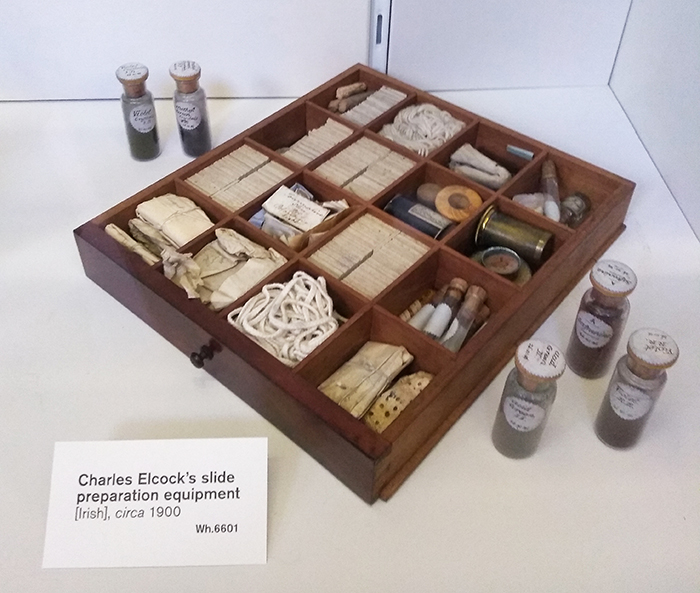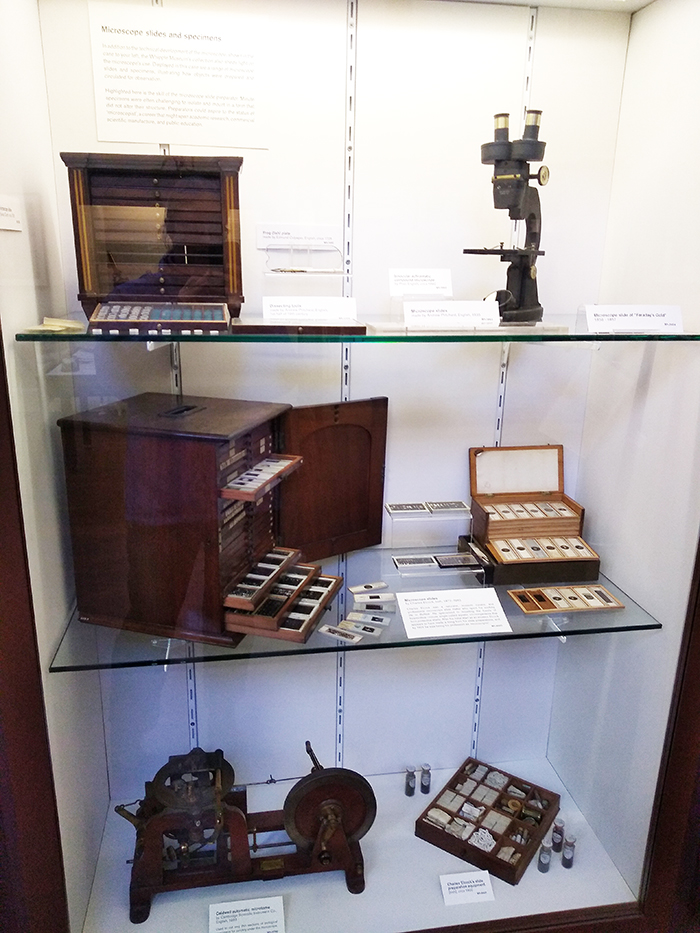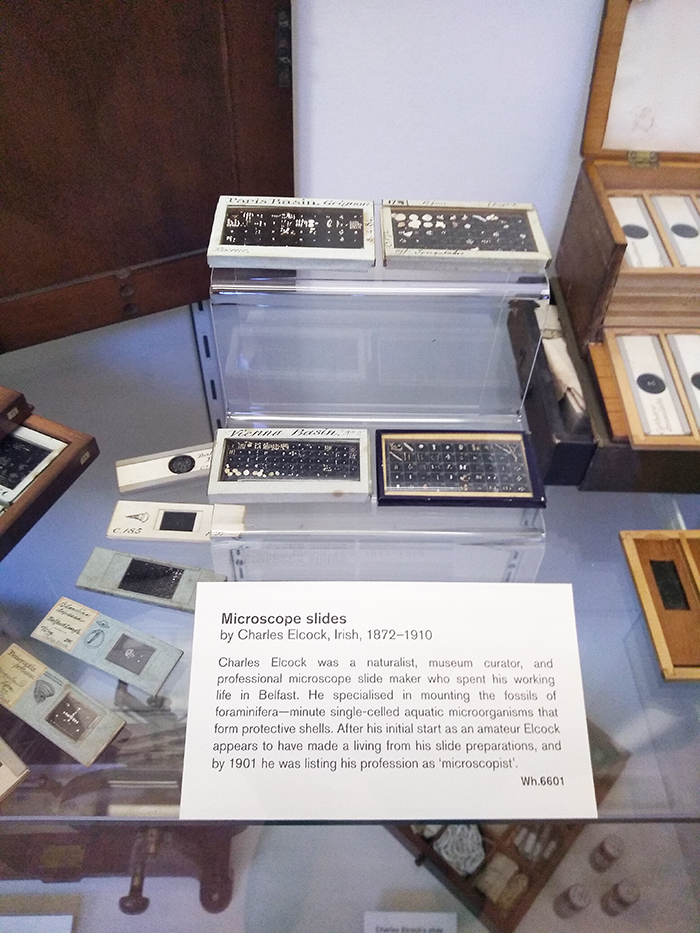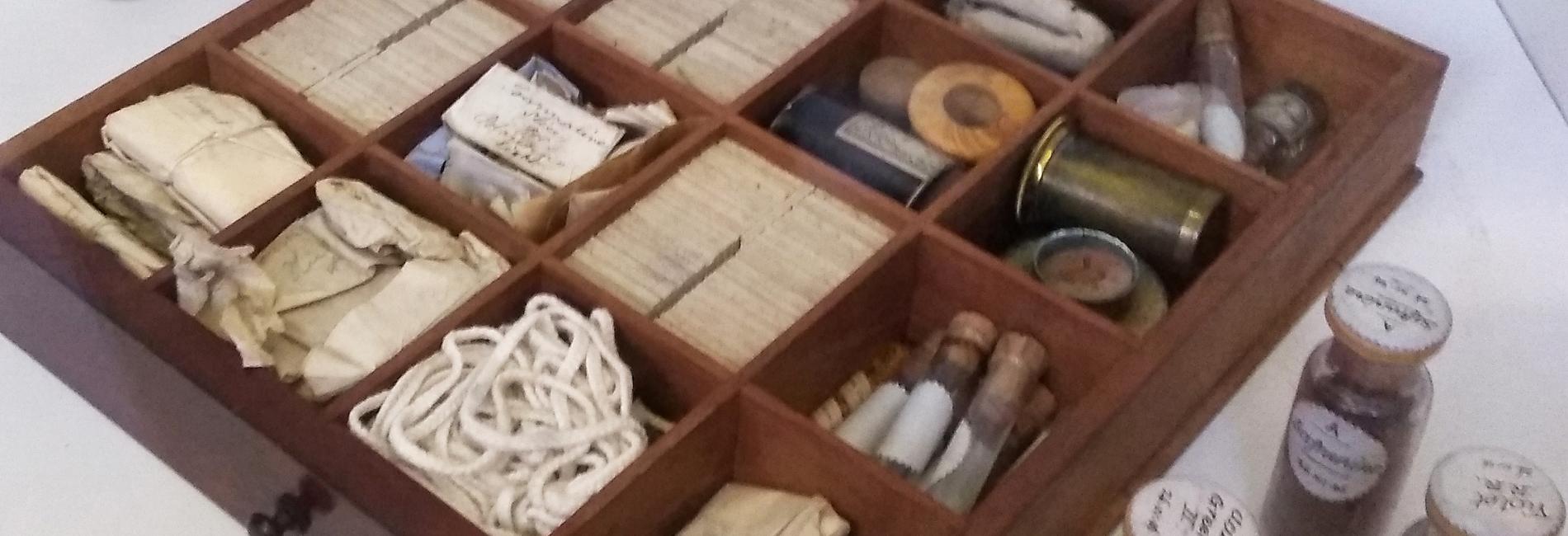Meet Charles Elcock, a man whose profession is now mostly forgotten.
As a professional "microscopist", Elcock built his career on his ability to produce microscope slides. His microscopy kit and slides, now in the Whipple Museum reveal his incredible skill. But Elcock and craftspeople like him don't often feature in the stories we tell about scientific discoveries.
Alison Giles, Learning Coordinator at the Whipple Museum of the History of Science, tells us more.
More information
Charles Elcock's slide preparation kit



Description of the kit, from the Whipple Museum's collections database
6601.5: Loose tray, seemingly removed from some sort of cabinet. Tray is made of a light wood (pine?) covered in black paper, plus a rough green canvas covering on front of tray only. Front has a small steel wire handle and a square of paper pasted onto upper left corner printed with the number "6". Tray fits into canvas-coloured card slip case. The tray contains an assortment of slide mounting materials, tools, and specimens, including a canvas covered oblong card slip case containing quartz specimens; two large quartz crystals; a ball of string; two packs of square card mounts wrapped in paper; two small thumb-turn clamps; a glass vial of "PURE TIN"; an empty glass vial; pumice stone; two glass slide covers; card table of small letters; circular box of small fossils/shells; three small circluar boxes of sand(?); a glass-plate negative of photo of two people on horses.
Current gallery label for the kit
Charles Elcock (1834-1910) was a naturalist, museum curator, and professional microscope slide maker who spent his working life in Belfast. These materials were in Elcock's possession at the time of his death, and we can therefore presume that they represent slides and tools that remained significant to him. Together, they point to an intriguing commercial scientific career. After his initial start as an amateur Elcock appears to have made a living from his slide preparations, and by 1901 he was listing his profession as 'microscopist' whilst also serving as the Curator of the Art Gallery and Museum at the Free Public Library in Belfast.
Elcock was a specialist in the highly skilled work of mounting the tiny fossils of foraminifera. Foraminifera are minute single-celled aquatic microorganisms that form protective shells. They date back to at least the early Cambrian period, 540 million years ago, and fossils of their shells are prevalent in a wide variety of geological settings. Specimens provided to Elcock from major expeditions are present in slides in this collection, including from the important Challenger, Porcupine, and Knight Errant scientific surveys, preserved here alongside numerous specimens from Irish locations. Together they form a unique record of global foraminifera study at the turn of the twentieth century.
Together Elcock’s collection encapsulates the work of a mostly forgotten profession. As a 'microscopist', Elcock was both a man of science and a craftsperson, his work spanning the realms of academic research, commercial scientific manufacture, and public education.


